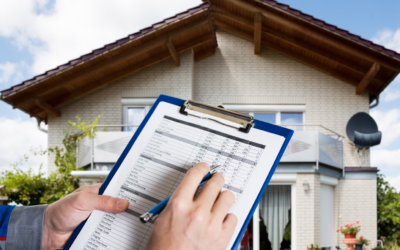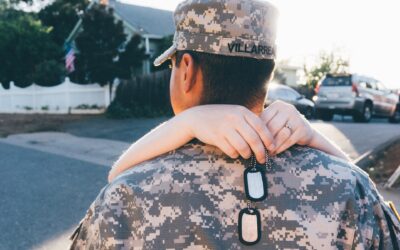A natural disaster can happen anywhere, at any time. In light of deadly spring-like storms that tore through Texas the day after Christmas, ravaging cities and tearing apart neighborhoods, we thought it was time to take a look at some disaster preparations people can make to protect themselves and their properties. Whether you live in earthquake country, tornado alley, or in a hurricane zone, there are important steps you can take.
Get an inspection
It’s a given when buying a house, but you can schedule one in your current home, too. An inspection can turn up items that need fixing or replacing, which can save you money and also eliminate dangers from your home that could prove dangerous in a powerful storm.
Hire an engineer
A Texas-based engineer touring tornado damage found “examples of ‘horrific’ construction in tornado wreckage,” said the Dallas Morning News. Timothy Marshall, “a forensic engineer and meteorologist who volunteered as part of a damage survey team created by the Fort Worth office of the National Weather Service” following deadly Texas tornados, “says he saw ‘rampant irresponsibleness’ in the way many homes and buildings were constructed.”
That included “improper attachment of the walls to the foundations, which just made walls fall either in or out,” in numerous structures, including Donald T. Shields Elementary in Glenn Heights, shown below. An engineer can help identify structural issues that could affect your home in a powerful storm.
Get prepared
The Texas tornadoes hit in the middle of the night, when vision was compromised. Earthquakes hit with no warning, whatsoever. No matter what type of storm is likely to hit your area, proper preparation is key.
Develop an emergency plan for your family
Bob Vila’s tips for creating an emergency plan at home include:
- Have an escape plan – “Decide on reunion spots via foot or car, depending on the type of disaster. If it is an emergency isolated to your house or block, choose a nearby rallying point that will allow a headcount. If the emergency involves a larger area, decide on a destination further away – perhaps a relative’s home or a public emergency shelter – and a backup to that in case that site also is affected.”
- Learn evacuation routes – Doing a few “practice drills” will get the family familiar with exit routes, when needed.
- Establish an emergency place to stay with friends or family – And learn the locations and rules of local public emergency shelters.
- Make a plan with neighbors – “If a flood occurs or a tornado hits when you are not at home, have a plan with neighbors, sitters, or relatives for your kids and pets. Decide on how you will get in touch, what will be done and where everyone will go.”
- Bone up on first aid skills – It’s a good time to take a CPR class.
Know your disaster
It’s not always easy to predict what kind of storm may hit your area – flooding can happen almost anywhere. But knowing the basics of storms that are common to your city and recommendations for what to do in an emergency can help keep you safe.
In an earthquake:
According to Earthquake Country, “In MOST situations, you will reduce your chance of injury if you:
- DROP down onto your hands and knees (before the earthquakes knocks you down). This position protects you from falling but allows you to still move if necessary.
- COVER your head and neck with both arms, clasping your neck with your hands. If a study desk or table is nearby, crawl beneath it while keeping one arm over your head. (If there is no shelter nearby, only then should you get down near an interior wall (or next to low-lying furniture that won’t fall on you), and cover your head and neck with your arms and hands.)
- HOLD ON to your shelter (or to your head and neck) until the shaking stops. Be prepared to move with your shelter if the shaking shifts it around.”
Experts warn that the most substantial danger to people in an earthquake is from falling objects. This is a great time to secure bookcases or any other items that could fall or be catapulted off of a wall or shelf. “Secure top heavy furniture to walls with flexible straps. Use earthquake putty or Velcro fasteners for objects on tables, shelves, or other furniture,” they said. “Install safety latches on cabinets to keep them closed.” Get more info here.
In a tornado:
“The best shelter from a tornado is a basement or storm cellar. If neither one is available, go to an inside room without windows on the lowest level of the building,” said News 9. “Cover yourself with something, such as pillows, a mattress or blankets. Place as many walls between you and the outside as possible.”
Other tips include:
- Avoiding structures like mobile homes if at all possible
- Staying away from windows
- If a tornado is approaching while you’re in a car, “get out immediately and go to the lowest floor of a sturdy, nearby building or a storm shelter. If there is not a building nearby, lie flat in a ditch or depression and cover your head with your hands… and do not get under an overpass or bridge” they said.
- Use a weather radio or local news station app to keep track of the storm and warnings in your area.
You can get information on safe rooms on the FEMA website and learn about storm shelters in your area on the National Storm Shelter Association’s site.
In a hurricane:
In addition to checking your insurance coverage, said MNN, you’ll want to “protect your property by installing the following items in your home:
- Hurricane shutters or keep ¾ inch outdoor plywood boards for each window. If using boards, be sure to install anchors and pre-drill holes so you can put them up quickly.
- Head and foot bolts on doors for extra protection.
- Hurricane straps or clips to help hold the roof to the walls of your home.
- A safe room that can withstand high winds and flying debris.
- Also, be sure to keep up with your landscaping; diseased and damaged tree limbs can become serious hazards in high-speed storm winds.
An evacuation plan is also key, as is an emergency supply kit with food; water; medications; pet supplies; items like toilet paper, soap, toothbrushes, and toothpaste; a basic first-aid kit; flashlights with extra batteries; and blankets and pillows.
In a flood:
Flood waters can rise quickly. According to FloodSmart.gov, you can stay safe during a flood by:
- Getting to higher ground and “avoid areas subject to flooding.”
- Staying away from flowing streams and flooded roadways.
- Escaping rising water in your home by gong to the top floor, attic, or roof.
- Listening to a battery-operated radio for the latest storm information.
- Turning off all utilities at the main power switch and close the main gas valve if advised to do so.
- If you’ve come in contact with floodwaters, washing your hands with soap and disinfected water.”
If you’ve suffered a flood, learn the steps to take toward recovery here.



